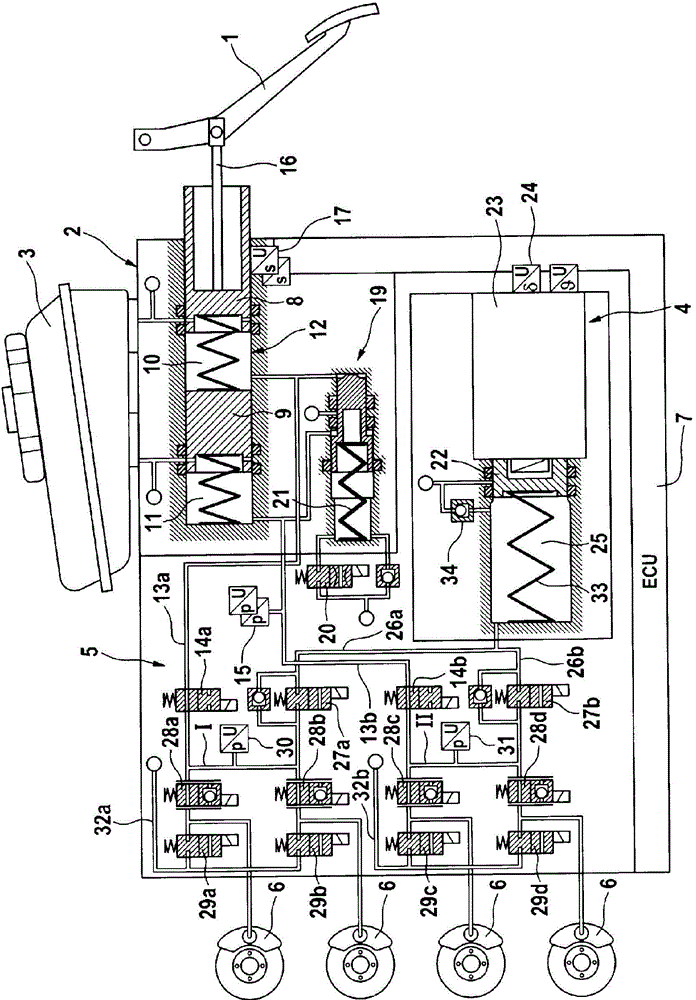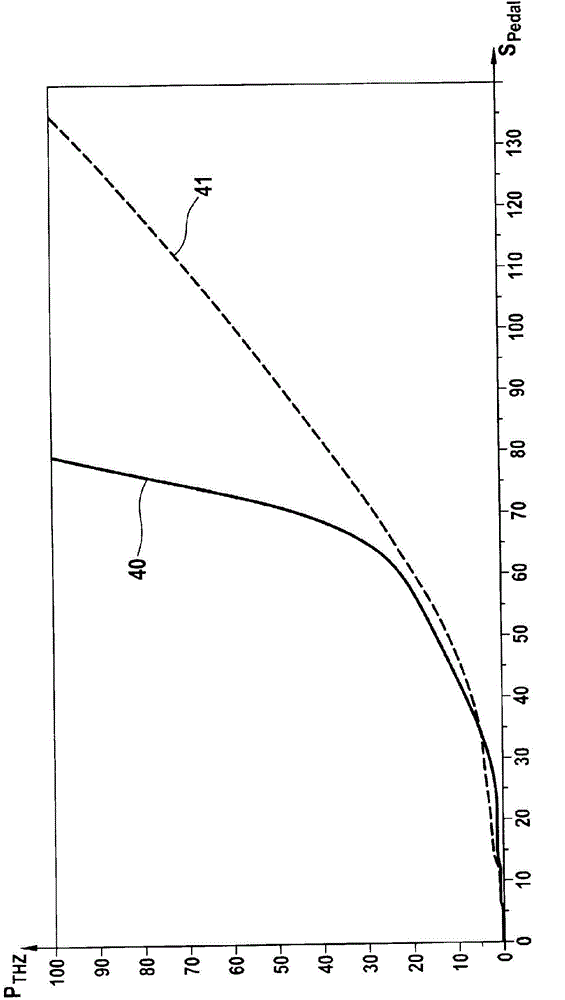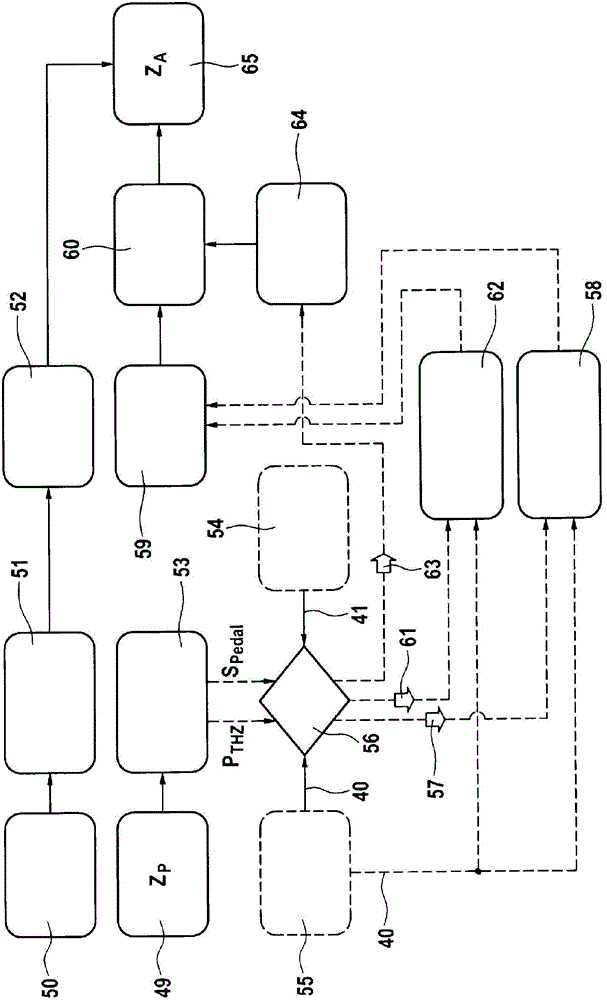Method for operating a brake system for motor vehicles, and brake system
A brake system and motor vehicle technology, applied in the direction of brake control system, brake safety system, brake transmission device, etc., can solve problems that are not described in detail
- Summary
- Abstract
- Description
- Claims
- Application Information
AI Technical Summary
Problems solved by technology
Method used
Image
Examples
Embodiment Construction
[0028] figure 1 An exemplary braking system is schematically shown in. The brake system includes an operating device that can be operated by the driver of the vehicle by means of the operation or brake pedal 1, a pressure medium storage container 3 allocated to the operating device 2, an electrically controllable pressure providing device 4, and an electrically controllable pressure A modulation device 5 and an electronic control and regulation unit 7 (ECU: electronic control unit). The output connection of the pressure modulation device is connected to a wheel brake 6 of a motor vehicle not shown. The electronic control and regulation unit is used For processing sensor signals and controlling electronically controllable components.
[0029] The operating device 2 includes a dual-circuit brake master cylinder or tandem master cylinder 12, which has two hydraulic pistons 8 arranged one after another in a (brake master cylinder) housing. 9. The piston defines the boundary of the h...
PUM
 Login to View More
Login to View More Abstract
Description
Claims
Application Information
 Login to View More
Login to View More - R&D
- Intellectual Property
- Life Sciences
- Materials
- Tech Scout
- Unparalleled Data Quality
- Higher Quality Content
- 60% Fewer Hallucinations
Browse by: Latest US Patents, China's latest patents, Technical Efficacy Thesaurus, Application Domain, Technology Topic, Popular Technical Reports.
© 2025 PatSnap. All rights reserved.Legal|Privacy policy|Modern Slavery Act Transparency Statement|Sitemap|About US| Contact US: help@patsnap.com



